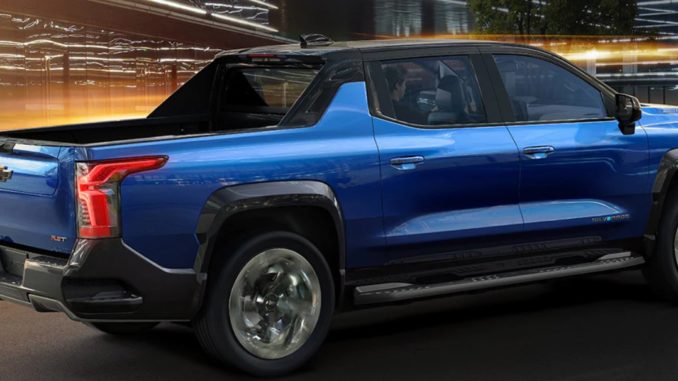
by Larry Magid
This post first appeared in the Mercury News
For many years, I spent the first week of January in Las Vegas at the giant Consumer Electronics Show but this year, I’m covering it from home. The show did go on, and some people and companies decided to attend in person, but like many journalists who cover CES, I wasn’t willing to risk exposure to omicron. Many exhibitors also skipped sending employees to the show this year.
Although I don’t miss the crowds and the overpriced hotel rooms, I do miss seeing friends, meeting with tech executives and getting a close-up look at the gadgets on display.
I also miss my annual drive from Silicon Valley to Las Vegas where I get to try out new auto-tech. It was on one of these drives that I first tested a dashcam and a device that brought Amazon Alexa to my car. In 2019, I got to my first road trip in a Tesla Model 3, getting a taste of what autonomous driving might feel like even though Tesla’s “autopilot,” at that point, was not nearly as sophisticated as it is now.
When I attended CES in-person, I spent a lot of my time in the North Hall, where auto companies and accessory makers showed off new products. Although there were plenty of boring products (there are only so many in-car subwoofers I care to see and hear), there have also been some innovations, including early looks at electric and autonomous vehicles and some interesting aftermarket products to upgrade in-car audio systems. In many ways, I found that section of CES more interesting than the main hall where companies like Samsung, LG and Sony showed off giant high-definition TVs. From the show floor, one TV looks exactly like another, except for the super large ones or the ones that fold up. Such TVs are either too large for most living rooms, too expensive for most consumers, or both.
Streaming and the future of cars
Even though I didn’t attend CES in person this year, they did stream some press events and keynotes, so I was able to virtually attend a keynote address by GM CEO Mary Barra. Barra herself was remote, broadcasting to CES and the streaming audience from Detroit.
It’s clear the GM is paying a lot of attention to Tesla, and if what Barra promised at CES becomes reality, it could challenge Tesla both in terms of its EV capabilities and autonomous features. “We aim to deliver our first personal autonomous vehicles as soon as the middle of this decade,” said Barra. “We are working to be the fastest to market with a retail personal autonomous vehicle.”
Whether GM will be first is a matter of debate. Tesla CEO Elon Musk promised that Tesla owners like me would be able to rent out our cars as robotaxis by the end of 2020. It hasn’t happened, but the company does have a still-buggy beta version of its so-called “Full Self Driving” software that I and an undisclosed number of other Tesla owners have been using for the past several weeks.
Like most other automakers, GM is taking baby steps to self-driving. In July, it announced that some of its 2022 models would be equipped with Super Cruise that offers automatic lane changing on some roads, the ability to pull a trailer while driving hands-free and an enhanced navigation screen. In October, it announced Ultra Cruise, which will “ultimately enable hands-free driving in 95 percent of all driving scenarios,” according to Barra. By comparison, Tesla’s Full Self Driving Beta operates on nearly every road I’ve tried it on, though not always as well as one might hope.
Electric Silverado Truck
GM’s big CES unveil is an all-electric Chevrolet Silverado pickup, which should be available in early 2023. The truck will compete with Ford’s F150 Lightning, pickups from Rivian and, eventually, Tesla. Barra said that the new pickup would have a GM estimated range of more than 400 miles and a starting price of $39,900 for the “work truck.” A fully loaded “RST” version will cost more than $100,000 when it becomes available later in 2023.
Barra also talked about GM’s new Ultifi platform, which will enable the carmaker to provide over-the-air software upgrades, similar to what Tesla has long offered to its owners. One difference between GM and Tesla is that GM is says that it’s making Ultifi “developer friendly,” to encourage third-party developers to enhance its vehicles like the way Apple and Google allow developers to create apps for its smartphones.
Barra said that GM’s ultimate goal is to create a world with “zero emissions, zero crashes and zero congestion.” While electric cars already have zero emissions and autonomous cars should at least reduce the risk of crashes, getting to zero congestion will be extremely challenging. But GM did show off a concept idea for a flying car that could reduce congestion to those lucky and wealthy enough to commute around town by air. I’m torn between having a quick commute in the flying car or a relaxing and luxurious commute in another concept car they unveiled, the InnerSpace, which was described as “a luxury hotel room on wheels.”
It’s great that nearly all major automakers are retooling for an all-electric, and ultimately, autonomous future. I, for one, look forward to resuming my annual tradition of a CES road trip, in a high-tech vehicle from a legacy card company like GM or Ford.
[related_articles location=”left” show_article_date=”false” article_type=”automatic-primary-section”]
Larry Magid is a tech journalist and internet safety activist.